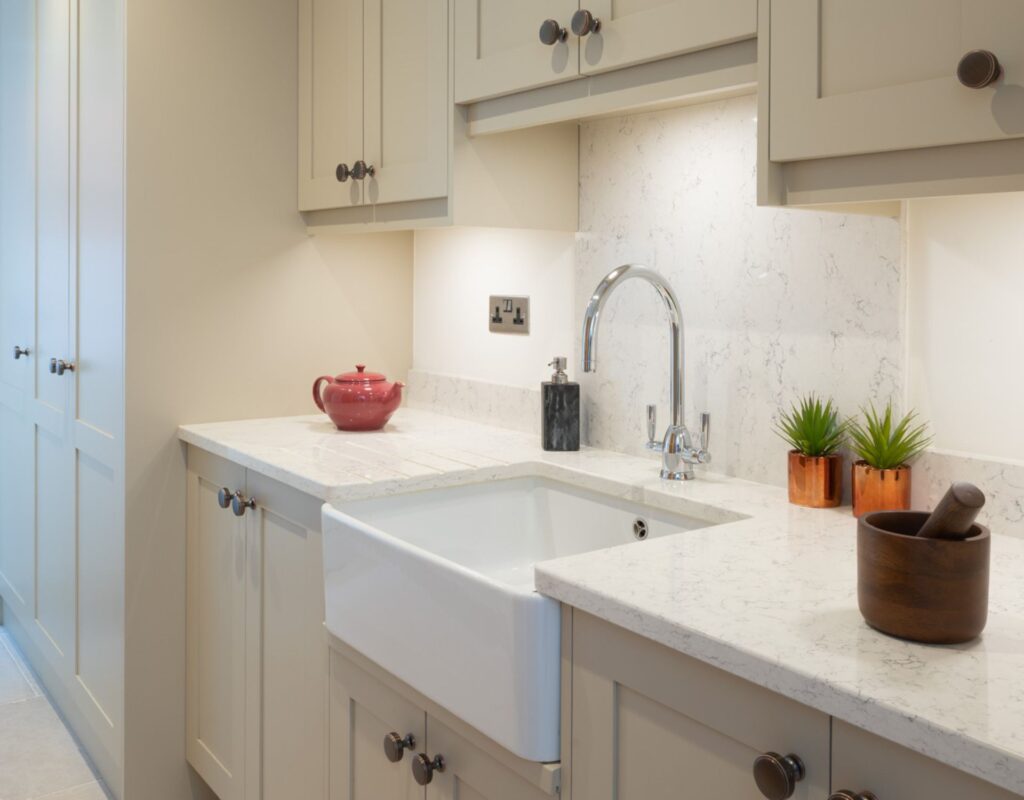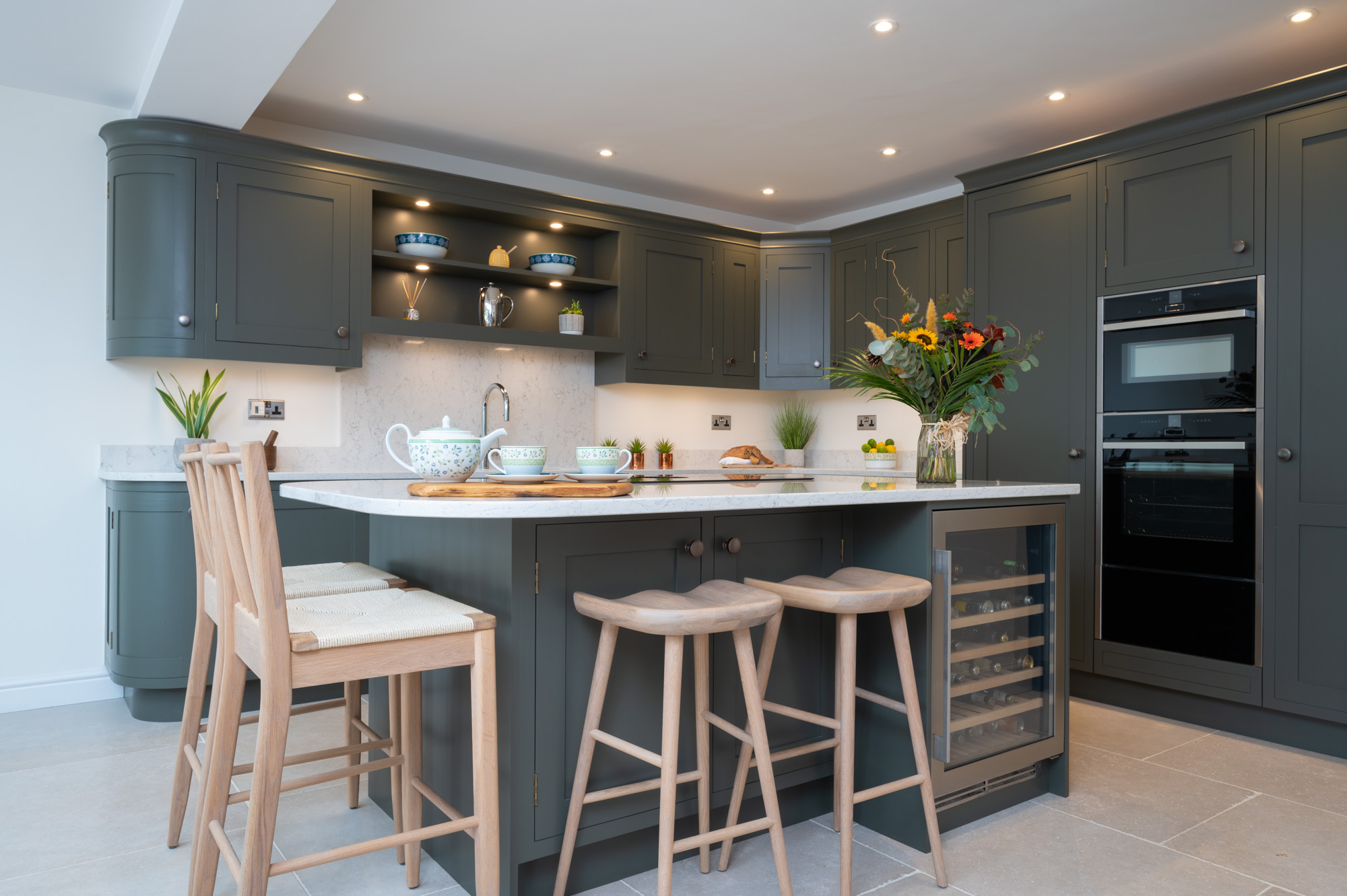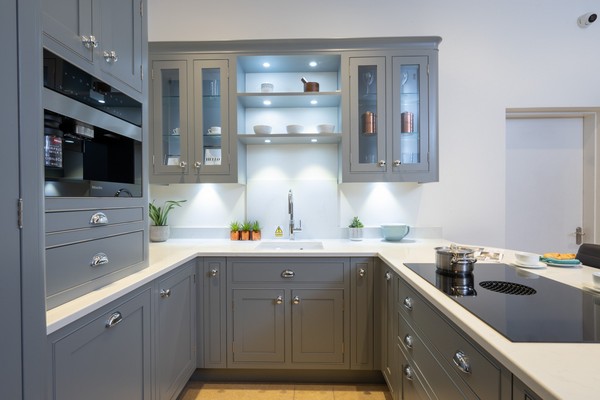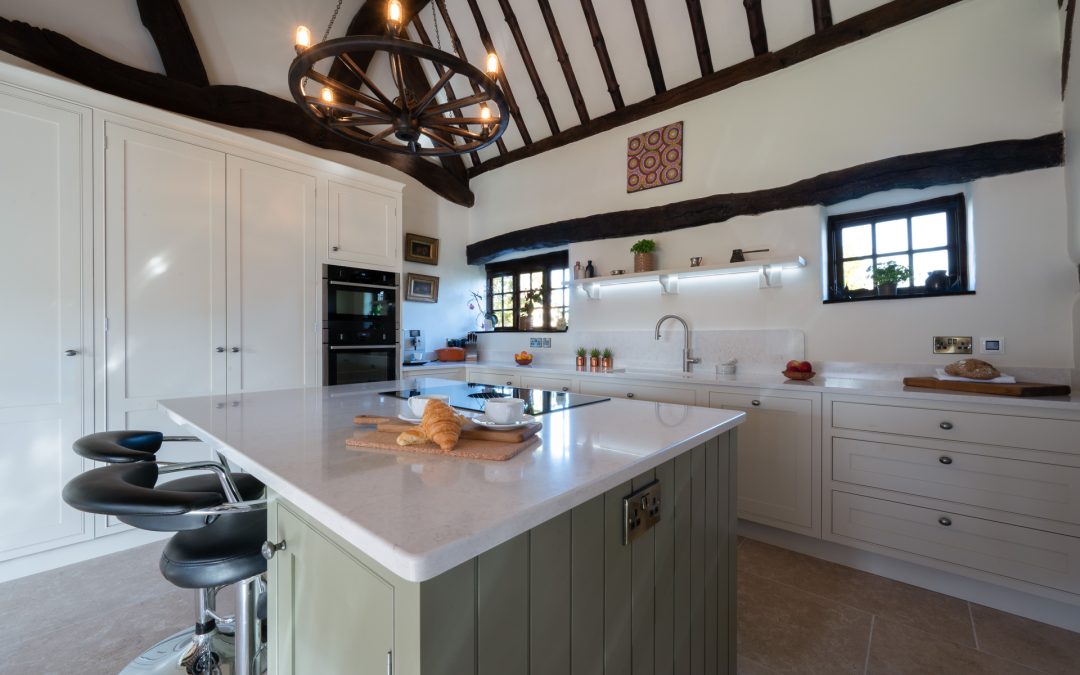The kitchen is often the heart of the home, a space where meals are prepared, conversations flow, and memories are made. To truly optimise this essential area, selecting the right layout is paramount. A well-designed kitchen layout can enhance workflow, improve functionality, and maximise space. If you’re in the process of designing or renovating your kitchen, this guide will provide you with some helpful insights to ensure you make the right choice.
Understanding the Different Kitchen Layouts
When it comes to kitchen layouts, there are several popular options which form the foundations of most designs. Each offers its own distinctive characteristics and unique benefits.

Galley Kitchens
A galley kitchen features two parallel rows of cabinetry with a central walkway in between. This layout is ideal for small/narrow spaces, allowing for efficient movement between cooking stations. Often seen in professional kitchens, this highly practical floorplan makes it easy to access essentials but doesn’t leave much room for socialising or relaxing.

L-Shaped Kitchens
The L-shaped kitchen consists of two runs of units that form a right angle. This versatile layout provides plenty of storage and worktop space while creating an open, spacious atmosphere. It is often utilised in open-plan living spaces, where a dining area or living room is situated nearby.

U-Shaped Kitchens
Featuring three rows of cabinetry, the U-shaped layout provides ample storage and countertop space. This design is perfect for family cooking as it allows multiple people to work simultaneously without getting in each other’s way. It also creates the perfect kitchen triangle, promoting a seamless workflow.

Island Kitchens
Islands can be integrated into various layouts, providing additional workspace and storage. An island layout not only enhances functionality but also creates a social hub where family and friends can gather. When introducing an island, it’s important to leave plenty of room for walkways.

Peninsula Kitchens
Similar to an island layout but with one side attached to the main countertop, a peninsula kitchen maintains an open feel while providing convenience and extra prep space. Peninsulas can be added to a single run of units to create an L-shaped layout or an L-shaped to create a U-shaped layout, enhancing practicality while accommodating open-plan living.
Key Factors to Consider
When determining the best layout for your kitchen, we recommend considering the following factors:
Lifestyle Needs – Consider how you use your kitchen. Do you cook frequently, do you love hosting, or is it primarily a space for informal socialising? Identifying your primary kitchen activities will inform your layout choices, for example, if you enjoy entertaining an island could be a great asset. Alternatively, if you’re an avid cook, you may wish to prioritise worktop and storage space.
Traffic Flow – Ensuring everyone can move around your kitchen efficiently is crucial. The last thing you need is for your family to get under your feet when you’re cooking or for an important access door to be blocked when loading the dishwasher or opening the oven.
Zoning – Zoning is an excellent way to help establish an efficient workflow. This concept elaborates on the traditional idea of the kitchen triangle, which states that your sink, hob, and refrigerator should be no more than 8 feet apart from each other, offering more freedom and flexibility. It not only takes into consideration your food prep, cooking, and cleaning stations, but also allows you to incorporate additional personal zones such as a bar area, a breakfast pantry, a baking area, or a social hub, enabling you to establish a layout that works for you.
Seating – As the modern-day heart of the home, many of our clients choose to incorporate seating into their layout. This could be informal bar stool seating at an island or peninsular, a dining island where a table is integrated into the cabinetry, or a completely separate dining table/seating area.
Architectural Features – We often work with older properties with stunning original features such as beams or exposed walls. It’s worth considering these when planning your layout to ensure you not only maximise workspace but also find a design that accentuates or complements your home.
Lighting – Natural and artificial lighting can have a significant impact on a kitchen’s atmosphere. Ensure your layout maximises light exposure, particularly in key preparation areas.

Final Thoughts
Finding the right kitchen layout requires careful consideration of your space, lifestyle, and preferences. It’s certainly not easy, and as the foundation of your design, it’s crucial to get the layout right. Here at Holme Tree, we’ve been designing bespoke kitchens for over 20 years, so we know what to look for when it comes to maximising space and creating the perfect flow. Our skilled designers will survey your property and listen carefully to your specific requirements to craft a kitchen layout that works for you. If you would like to discuss your project with us, please call us on 01530 564561 or email [email protected]. We would love to help you elevate your home with a beautiful and unique kitchen.

